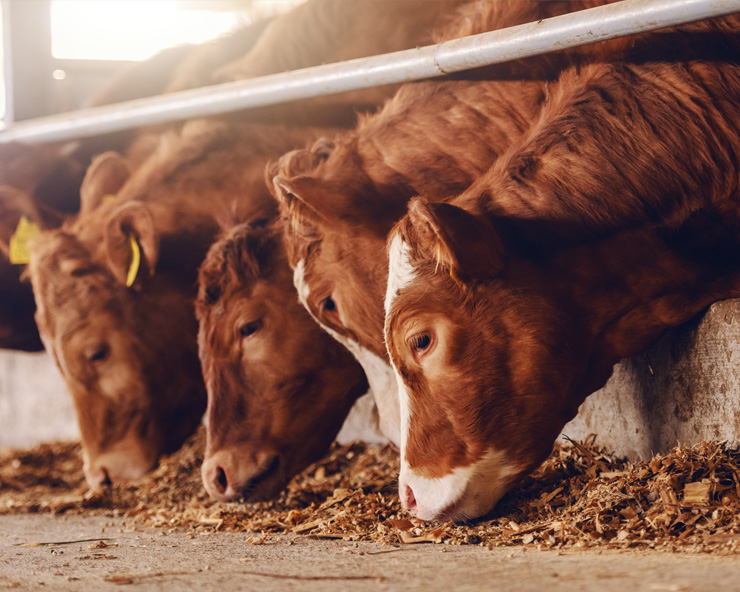Diseases can be spread in a variety of ways – through humans, the environment, and other animals. Knowing how diseases spread can help you take actions to protect your animals. Routes of disease spread are listed and discussed below.
Aerosol transmission
Aerosol spread happens when droplets are spread through the air by coughing or sneezing. The droplets are inhaled, or land on the mucous membranes (eyes, mouth) of another animal. Diseases that are spread by the aerosol route don’t usually last long in the environment. Animals usually have to be in close quarters in order to spread disease this way. Diseases that can be spread by aerosol transmission include Tuberculosis, Q Fever, and Bovine Viral Diarrhea (BVD).
Oral transmission
Oral spread of disease happens when contaminated food or water is consumed. Feed and water contaminated with feces, urine or saliva often cause disease spread this way. It’s important to protect your feed from contamination by birds or rodents. When buying feed, use only reliable sources. Examples of diseases spread orally include Johne’s, Bovine Viral Diarrhea (BVD), Rotavirus, and Foot and Mouth Disease (FMD).
Vector transmission
Vectors, such as insects, can spread disease. Common vectors include flies, mosquitoes, ticks, and fleas. The vectors you have to worry about depend on your location and the time of year. You can take preventative measures to protect your herd/flock. Using manure management, clean bedding/litter, moisture control, and rotational grazing are all steps to help control insect vectors. The use of certain essential oils and fly traps can be beneficial for organic and alternative farms. There are various diseases that are spread by vectors, a few include Lyme disease, pink eye, contagious mastitis, and Bluetongue.
Fomite transmission
Fomite spread of disease is very common. Fomites are contaminated objects that can transfer disease from an infected animal to another animal or person. Examples include clothing, footwear, vehicles, bedding, feed pails and troughs, birthing equipment, medical tools and more. Make sure to dispose of bedding/litter away from your herd/flock, so disease spread is less likely. It is also valuable to properly sanitize your equipment and tools to avoid spreading disease. Recognizing the risk that vehicles can bring to your herd/flock’s health is important. Vehicles or machinery can become fomites for diseases, so limit traffic around your animals. Many of the diseases spread by different transmission routes, can also be spread by fomites. Common diseases spread by fomites include Salmonella, Cryptosporidium, and Giardia.
Stay informed about diseases in your area that may be of concern to your herd or flock. Your state’s Department of Agriculture website is a great way to stay informed. If you think animals in your herd or flock may have a reportable disease, contact your veterinarian and your state’s animal health official.
More Information on Animal Diseases and Transmission:
CFSPH-Biosecurity: Routes of Animal Diseases

